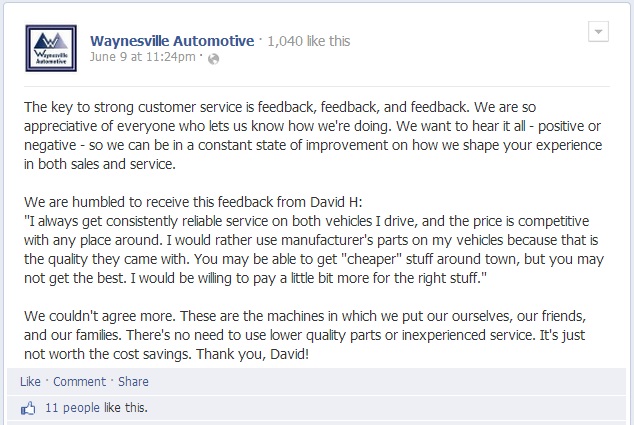There is always a danger when using metaphors to illustrate concepts within the Bible. The Book itself uses metaphors throughout and the parables used by Jesus help to illuminate proper ways of living such as the Parable of the Two Debtors, as well as future events such as the Parable of the Ten Virgins. However, all too often metaphors are conceived in the minds of men that they may attempt to illuminate a truth when in reality they are misguiding those who may hear.
This is particularly dangerous when attempting Biblical exegeses. The text of the Bible works so well for those who read it and truly proclaim its Gospel. When we try to slide in metaphors to explain it, our earthly flaws often take people down the wrong path.
Despite this understanding, I felt that this particular metaphor made enough sense that I was compelled to bring it to light. It’s best to be cautious with everything one hears or reads that isn’t direct Biblical teaching. Some can be helpful. Most can mislead. I’m hopeful that this will be helpful in understanding where we stand in this world and why it’s so important to be humble, thankful, repentant souls.
In many ways, life is like baseball. We walk up to the plate with our bat in hand. People, circumstances, and events in our life pitch the ball and we have a choice to make while the ball is in the air. Do we swing or not? When we choose to swing, we can either hit the ball or miss. Sometimes, life sends us a pitch and we’re able to make contact, sending the ball out into the field. Sometimes we get a hit, sometimes we are called out. These are out successes and failures.
Sometimes we swing and miss altogether.
If we choose not to swing, it can either be a ball or a strike. If it’s a ball, we made the right choice not to swing, not to act on that particular pitch that life through at us. Other times, it’s a strike and we miss an opportunity for a hit based upon our inaction.
We go through life facing many pitchers. Some pitchers, such as school, are easier to hit for some than others. Those who are successful hitting against those pitchers have an opportunity to move up to face more challenging pitchers in life such as careers. Those who are not successful against the school pitcher still have opportunities. They may go into a different league but their path through life will still bring pitchers that give us opportunities to succeed or fail.
The examples of all the games and pitchers that we face through life can go on forever. Love, money, illness, parental responsibilities – we often are faced with such a wide range of pitchers and pitching styles that we focus on the ones that we hit well and neglect the others that make us swing and miss more often than not.
There’s another pitcher that we all must face. It is sin. When Satan himself takes to the mound, we get to see pitches that we didn’t even know existed. The fastballs are faster, the curveballs break harder, the sliders are nasty. We often take our swings and we can even make contact every now and then, but we’re clearly over-matched. It’s like a major league pitcher against a little league batter. We have no chance in the long run. He has already beaten us.
The only way to get on base when sin is the pitcher is if we have Jesus Christ as the umpire. He knows that we cannot hit Satan’s pitches. He died on the cross so we wouldn’t have to. If we let go and allow Jesus to call the game for us, we don’t even have to swing. We shouldn’t swing at all. Even if Satan pitches it in the center of the strike zone, if we trust in Jesus as our Lord and Savior and life a life of repentance, He will call it a ball every time we don’t swing. Satan’s nasty pitches of sin can only strike us out if don’t put our faith in the umpire. If we start swinging at sin on our own, we will always strike out.
Living the life of a believer is not about being a good person. It’s not about trying to be fruitful or making a difference in this world. It’s not about tolerance of others, acceptance of others’ beliefs, or a modernization of old ideas. It’s about letting go and believing in one universal truth that can be summed up in three acknowledgements.
- We are sinners.
- We are incapable of facing sin alone.
- It’s only through complete belief in Christ and the constant repenting for our sins that we have any chance at all of making it to the next life.
Despite all we hear from many modern day “pastors,” Jesus is not here to help us live a good life. He’s didn’t die on the cross so we could prosper. Letting Him into your life is not something that will guaranty you success in your job, your marriage, or your health. He came to this world and died on the cross for our sins so we may have a path to be with Him in Heaven. It is the only path. To get there, we have to stop swinging at our sins and start begging for mercy because of them.
via Judeo Christian http://judeochristianchurch.com/when-jesus-is-the-umpire/
















































